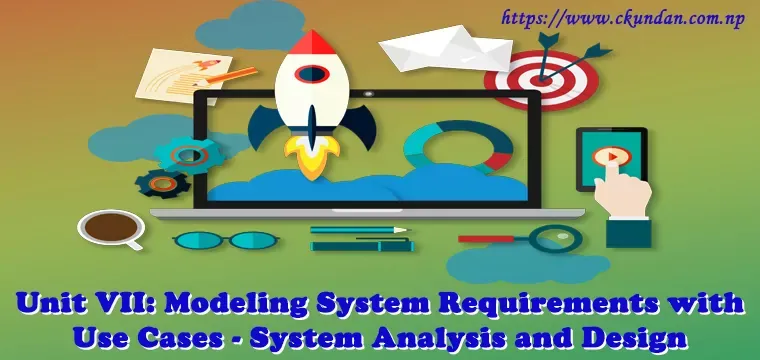In order to successfully plan, analyze, design, construct and implement an information system, the system analyst should understand the needs of the users and the owners and also need to understand the reasons why the system is being developed. This approach is also referred to as user-centered development.
In this “Modeling System Requirements with Use Cases - System Analysis and Design” you will learn about the following topics:
- An Introduction to Use-Case Modeling
- System Concepts for Use-Case Modeling
- Use Case Diagram, Use-Case Narrative
- Components of Use Case Modeling
- Use Cases
- Actors
- Types of Actors
- Primary Business Actor, Primary System Actor, External Server Actor, External Receiver Actor
- Relationships
- Associations, Extends, Uses, Depends on, Inheritance
- The Process of Requirements Use-Case Modeling
- Identify the Business Actors
- Identify Business Requirements Use Cases
- Construct Use Case Model Diagram
- Document Business Requirements Use Case Narratives
- Use-Cases and Project Management
- Ranking and Evaluating Use Cases
- Identify Use Case Dependencies
==== Point to Note ====
If you like to contribute, you can mail us BCA Notes, BCA Question Collections, BCA Related Information, and Latest Technology Information at [email protected].
See your article appearing on BCA Notes (Pokhara University) main page with your designation and help other BCA Students to excel.
Please write comments if you find anything incorrect, or you want to share more information about the topic discussed above.
BCA 3rd Semester System Analysis and Design Notes Pdf:
- Unit I: The Context Of System Analysis and Design
- Unit II: Information System Building Blocks
- Unit III: Information Systems Development
- Unit IV: Project Management
- Unit V: System Analysis
- Unit VI: Fact Finding Techniques For Requirements Discovery
- Unit VIII: Data Modeling and Analysis
- Unit IX: Process Modeling
- Unit X: Feasibility Analysis and The System Proposal
- Unit XI: System Design Methods





![BCA 3rd Semester Question Papers Pdf [Updated]](https://blogger.googleusercontent.com/img/b/R29vZ2xl/AVvXsEi72Tr_1PIKGOUOzJZQGJCmJkOyBOkNs4f3KN8p4m57QEpsFVFb40cF6HiZ-OH1SR0L5qaRPUuHJRj485zSYsAhOH3KpNWUuKwIE8TDx1hMqyTpJ9aSzaP_5QlkmnsGWAcljd79tGeSWMo/w72-h72-p-k-no-nu/BCA+3rd+Semester+Question+Papers+Pdf.webp)


0 Comments